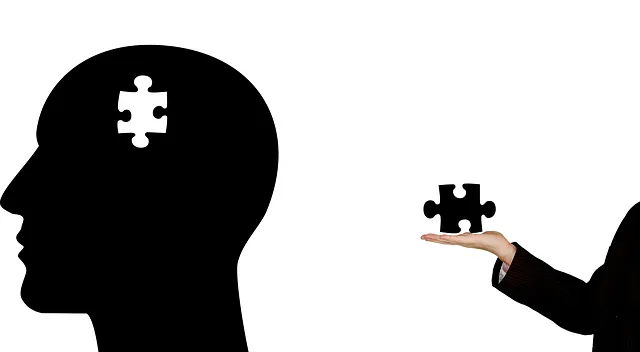Mental health stigma hinders access to help in communities like Lafayette, driven by misinformation from media portrayals and public misconceptions. To combat this, public awareness campaigns and crisis intervention guidance are vital for normalizing conversations about mental health. Media representations influence understanding and compassion, with authentic narratives and expert insights crucial for accurate depictions. Comparisons between healthcare systems reveal contrasting strategies: Lafayette focusing on long-term solutions, Kaiser on accessibility. Integrating lived experiences and expertise in media storytelling reduces stigma and promotes holistic care, with digital media literacy key in the modern era.
In today’s digital age, media representation of mental illness plays a pivotal role in shaping societal perceptions. This article explores the intricate relationship between media portrayals and mental health stigma, delving into how accurate (or inaccurate) depictions impact public understanding. We compare inpatient care facilities, Lafayette and Kaiser, to shed light on available resources. Furthermore, we present effective strategies for enhancing representation and emphasize the power of media literacy in fostering positive change, challenging stereotypes, and promoting empathy towards individuals grappling with mental health challenges.
- Understanding Mental Health Stigma in Society
- The Impact of Media Portrayals on Perception
- Lafayette and Kaiser: Inpatient Care Comparisons
- Strategies to Enhance Accurate Representation
- Empowering Positive Change Through Media Literacy
Understanding Mental Health Stigma in Society

Mental health stigma is a pervasive issue that often prevents individuals from seeking help and support for their conditions. In society, various misconceptions and stereotypes surrounding mental illness create barriers to understanding and empathy. This stigma can manifest in many ways, from subtle discrimination to overt rejection, making it challenging for those affected to access the care they need. Lafayette and Kaiser, for instance, like many communities, have historically faced questions around inpatient mental health services (Lafayette does Kaiser have inpatient mental health?). Such misconceptions often stem from a lack of knowledge and awareness, leading to fear and judgment rather than compassion.
Addressing mental health stigma requires concerted efforts, including public awareness campaigns that educate people about the realities of mental illness. Crisis intervention guidance can also play a significant role in normalizing conversations around mental health. By breaking down these barriers, communities can foster an environment where individuals feel comfortable discussing their struggles and seeking professional help without fear of judgment or discrimination. Through such initiatives, Mental Health Awareness can be elevated, ensuring that those facing mental health challenges receive the necessary support and care.
The Impact of Media Portrayals on Perception

Media portrayals play a pivotal role in shaping society’s understanding and perception of mental illness. Often, these representations can either educate or misinform the public. When depicted accurately, media can foster self-awareness exercises and empathy building strategies, encouraging open conversations about mental health challenges. For instance, Lafayette does Kaiser have inpatient mental health services? Such inquiries stem from a desire to understand treatment options, sparked by authentic media portrayals. However, when mental illness is stigmatized or misrepresented, it can perpetuate harmful stereotypes and hinder individuals from seeking help.
Therefore, the development of public awareness campaigns that promote accurate and nuanced representations is essential. By showcasing diverse experiences and challenging outdated narratives, media can contribute to a more empathetic society where individuals with mental health conditions feel supported rather than judged. This shift in perception may encourage those struggling to speak up and seek the help they need, ultimately improving outcomes for everyone.
Lafayette and Kaiser: Inpatient Care Comparisons

In the context of mental illness representation in media, a critical comparison between Lafayette and Kaiser healthcare systems highlights disparities in inpatient care facilities. Both organizations aim to support individuals battling mental health challenges, but their approaches differ significantly. Lafayette focuses on providing comprehensive, long-term solutions, including intensive therapy programs and tailored recovery plans, catering to diverse patient needs. In contrast, Kaiser emphasizes accessibility and efficiency, offering specialized units for acute crises and short-term stays, ensuring swift intervention when needed.
The distinction between these systems underscores the importance of balancing immediate crisis management with enduring mental wellness. While Kaiser’s inpatient care is renowned for its promptness, Lafayette’s approach delves deeper into mood management through structured programs like Mental Wellness Journaling Exercises and tailored coaching initiatives, fostering sustainable mental health practices. Such comparisons encourage development in Mental Wellness Coaching Programs, ensuring individuals receive holistic guidance throughout their recovery journeys.
Strategies to Enhance Accurate Representation

Media plays a significant role in shaping societal perceptions about mental illness, making accurate representation crucial for fostering understanding and compassion. To enhance this, various strategies can be implemented. One key approach is to involve individuals with lived experiences of mental health struggles in the creative process, ensuring their voices are authentically represented on screen or in print media. This practice promotes diverse narratives and challenges stereotypical portrayals. Additionally, incorporating professional insights from mental health experts during production or editing can help maintain accuracy and avoid potentially harmful misconceptions.
Integrating mental health education programs designed with Compassion Cultivation Practices can also significantly contribute to more empathetic storytelling. Stress Management Workshops Organization initiatives that focus on emotional literacy can empower media creators to portray characters’ mental health journeys with nuance. By combining these strategies, media platforms, including Lafayette does Kaiser have inpatient mental health facilities, can play a pivotal role in promoting positive change by encouraging open conversations about mental illness and reducing the stigma associated with it.
Empowering Positive Change Through Media Literacy

In today’s digital age, media plays a significant role in shaping public perception about mental illness. Lafayette and Kaiser, for instance, have made strides in providing inpatient mental health services, yet media literacy remains crucial to ensuring accurate representation. By empowering individuals with knowledge about mental wellness coaching programs and trauma support services, we can challenge stereotypes and foster positive thinking. Educating the public about the diversity of mental health experiences allows for greater empathy and understanding, leading to a more supportive society.
Media literacy encourages critical thinking about how mental illness is depicted, whether in television shows, films, or online platforms. It equips individuals with the tools to identify harmful narratives, recognize the importance of accurate representation, and advocate for positive change. Through media-driven conversations, we can drive development in this sector, ensuring that resources like Lafayette’s and Kaiser’s inpatient facilities are accessed by those who need them while promoting mental wellness coaching and trauma support services as integral components of holistic care.
Media representation plays a pivotal role in shaping public perception of mental illness, with accurate portrayals offering a path to reduce stigma. By comparing inpatient care facilities like Lafayette and Kaiser, we highlight the importance of nuanced storytelling. Strategies for enhancing representation include media literacy education and promoting positive narratives. Together, these efforts can foster understanding and empower positive change, ensuring individuals with mental health challenges receive the support they deserve. In exploring these solutions, we take a step towards a more inclusive and empathetic society that accurately reflects the reality of Lafayette and Kaiser’s inpatient mental health services.






